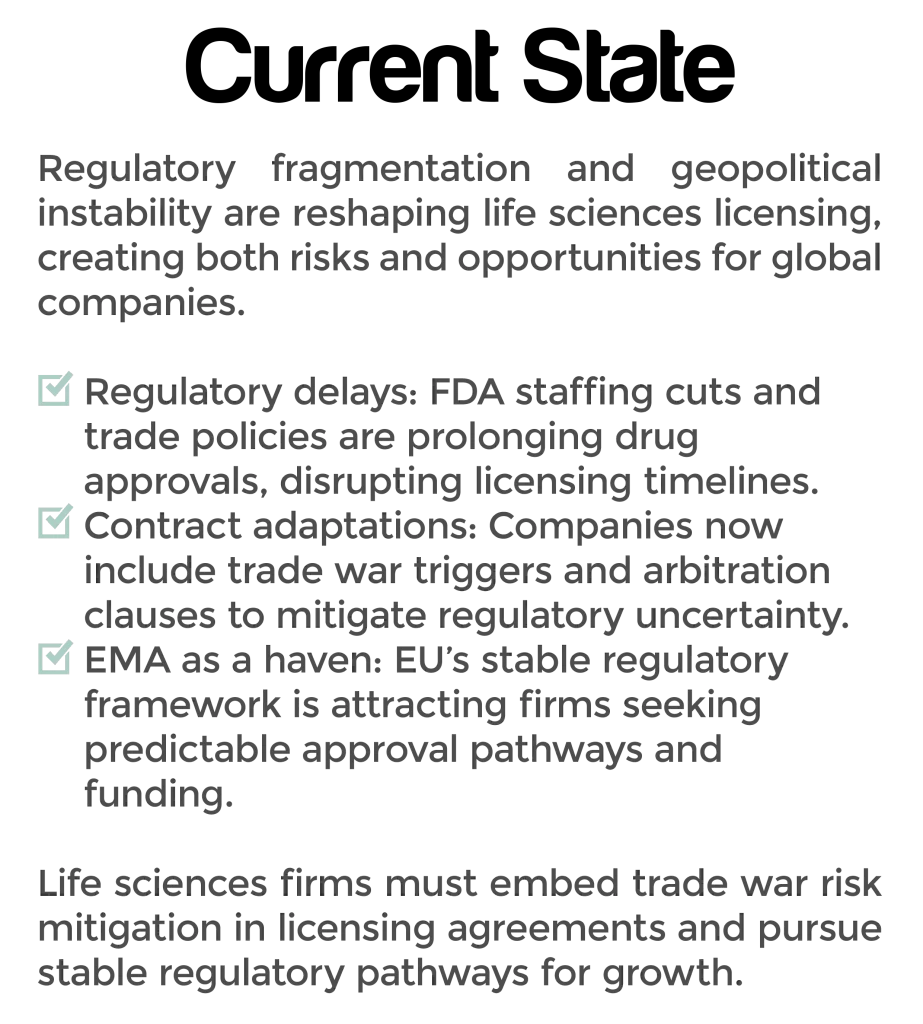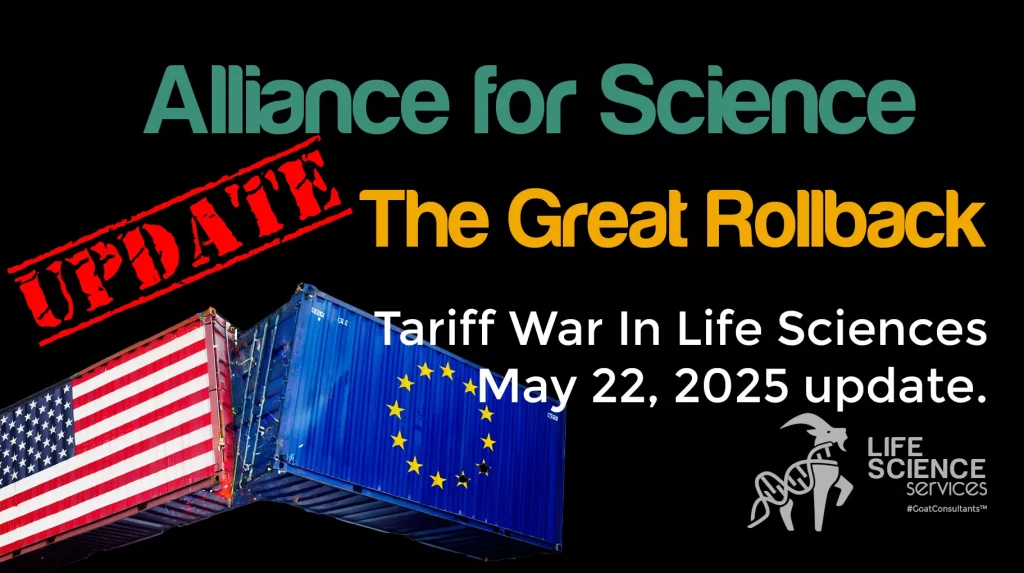
The global life sciences sector faces unprecedented disruption as trade wars, regulatory fragmentation, and political volatility collide. This article explores the impacts of these factors on licensing agreements in life sciences, highlighting the challenges and opportunities for companies in the sector.
“Data-Driven Strategies for Builders & Doers in Life Sciences: Episode 10”

The evolving landscape of licensing agreements in life sciences is marked by regulatory fragmentation, FDA delays, and geopolitical shifts.
Companies are adapting through contract modifications and seeking stable approval pathways like the EMA’s regulatory framework. To navigate these challenges, firms must embed trade war risk mitigation into their licensing agreements.
The Great Rollback: Context and Implicaitons in Licensing Agreements in Life Sciences
The Great Rollback, characterized by U.S.-driven trade wars and regulatory misalignment, has created significant disruptions in the life sciences industry. The imposition of tariffs and export controls, coupled with FDA instability, has led to a fragmented regulatory environment that complicates licensing agreements in life sciences.
Impacts of Current Politics and Trade Wars on Medicines Regulatory
FDA Layoffs
The FDA has faced significant layoffs, impacting its ability to review and approve new drugs and medical devices efficiently. These layoffs have led to delays in regulatory approvals, affecting the timelines and milestones of licensing agreements(1)(2).
Data Point: PwC reports 22% of licensing deals faced disputes over FDA delays in 2023, which represents hundreds of millions of dollars(13).
Short term impacts: Budget and staffing cuts at the FDA in 2025 are already impacting stock markets. Companies like Beam Therapeutics and Verve Therapeutics informed investors and SEC that Trump policies may lead to the complete stop of several programs(18).
Political Influence
Political decisions shape healthcare policies, influencing drug approvals and regulatory frameworks. The Trump administration’s emphasis on deregulation and accelerated approval pathways has created a volatile regulatory environment(3)(4).
Data Point: Life sciences companies are increasingly embedding tariff contingencies into contracts, with 1 in 3 agreements now including termination rights for trade war disruptions(14).
US Conservatism Measures
Measures to protect U.S. technologies, such as export controls on critical technologies, have restricted access to licensed IP for international partners. This protectionism has led to the renegotiation of licensing terms and increased compliance costs(4).
Data Point: Building a new production facility in the U.S. can cost up to $2 billion and take 5 to 10 years before it is operational. Novo Nordisk announced an investment of $4.1 billion to ramp up production in the U.S. (15).
Short term impacts:U.S. Export Administration Regulations (EAR) placed AI and LLM tools on the Commerce Control List (CCL) which may force European biotechs to abandon partnerships reliant on American machine learning models. It will cost billions of U.S. $ to Medtech U.S. companies in lost revenues(16).
Impacts on Licensing Agreements
Existing Agreements
Regulatory fragmentation and political instability have led to missed milestones and disputes over delayed approvals. Licensing agreements now often include clauses for regulatory arbitration to address these challenges(5) (6).
Future Agreements
Future licensing agreements must account for geopolitical risks and regulatory uncertainties. Companies are embedding “trade war triggers” and dual regulatory escrows in contracts to mitigate these risks(7).
Data Point: PwC reports 22% of licensing deals faced disputes over FDA delays in 2023, which represents hundreds of millions of dollars(13). Budget and staffing cuts in 2025 could largely increase this trend.
Short term impacts: licensing agreements require increased flexibility, proactive regulatory risk management, and strategic adaptation to political uncertainties. Companies should incorporate mechanisms such as trade war triggers, regulatory arbitration clauses, and alternative IP-sharing strategies to safeguard licensing agreements against volatility(5)(18).
EMA Stability and Reliability: A Strategic Asset
The European Medicines Agency (EMA) offers a stable and reliable regulatory environment, making it an attractive option for launching new therapies. The EMA’s predictable timelines and harmonized market access provide significant advantages for companies seeking to navigate regulatory complexities(8) (9).
Opportunities for US Companies
- Regulatory Springboard: US companies can use EMA approvals to secure financing and accelerate market entry in Europe(10).
- Global Credibility: EMA approvals are increasingly accepted by APAC regulators, facilitating faster global market access(10).
- Pricing Stability: The EU’s centralized health technology assessment process offers predictable reimbursement, attracting investors(10).
Opportunities for Chinese Companies
- Avoiding US Geopolitical Risks: Chinese companies can leverage the EU-China Mutual Recognition Agreement to bypass US regulatory hurdles(11).
- Collaborative R&D: Partnerships with EU academic hubs provide access to EMA’s priority networks and grants(12).
- Lower Evidence Thresholds: The EMA’s acceptance of smaller, regional trials for rare diseases offers a faster path to market(12).
#GOATConsultants™-Level Insights:
Turn trade war risks into opportunities.
Licensing agreements in the life sciences industry must adapt to the evolving geopolitical and regulatory landscape. By leveraging the stability and reliability of the EMA, companies can mitigate risks and capitalize on new opportunities. The Great Rollback demands a strategic approach to licensing, ensuring that agreements are resilient to political and regulatory disruptions.
Join us for a free 30 minutes call.
Enjoy more great insights:
- Latest News On Tariffs In Life Sciences
- Trump’s Biotech Policy Is Reshaping Global Science and Pharma Supply Chains
- Tariff Exemptions in Life Sciences – A Closer Look at the April 2025 Update
- Licensing Agreements In Life Sciences Amidst Trade Wars and Regulatory Shifts
- Tariff War In Life Sciences: How to Manage Customs Risks and Costs
- Medicine Shortages in the EU: Root Causes and Strategic Solutions
Learn more about financial management in the life sciences.
- Mastering Licensing Agreements Financial Management for Life Sciences Success

- Is Finance The Weak Link in Biotech Innovation?






